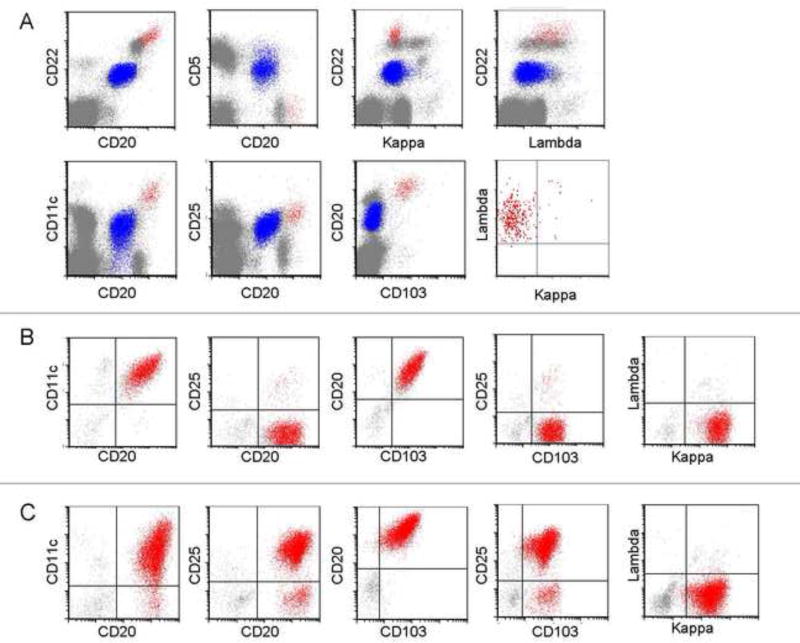Figure 5.
(A) flow cytometry analysis demonstrating coexistent hairy cell leukemia and monoclonal B-cells consistent with chronic lymphocytic leukemia. Analysis shows mononuclear cells, as determined by FSC and SSC characteristics, with HCL cells gated as red events, and CLL cells gated as blue events. The chronic lymphocytic leukemia cells expressed dim CD20, dim CD22, dim CD11c, moderate CD25 and CD5, and showed dim kappa light chain restriction. (B) The hairy cell leukemia cells comprised approximately 0.55% of the cells, and were positive for CD20 (bright), CD11c (bright), CD25 and CD103. The hairy cell leukemia cells were lambda light chain restricted when gated on bright CD11c positive B-cells; (B–C) Flow cytometry analysis demonstrating a case of HCL-v with an apparent phenotypic change. Analysis shows mononuclear cells, as determined by FSC and SSC characteristics, with HCL-v cells gated as red events. (B) The hairy cell leukemia variant cells were negative for CD25. However, a small, minor subpopulation was positive for CD25. (C) Two years later, the neoplastic cells appeared to have acquired expression of CD25, but may actually represent an expansion of the minor CD25 positive population at diagnosis (B).

